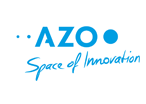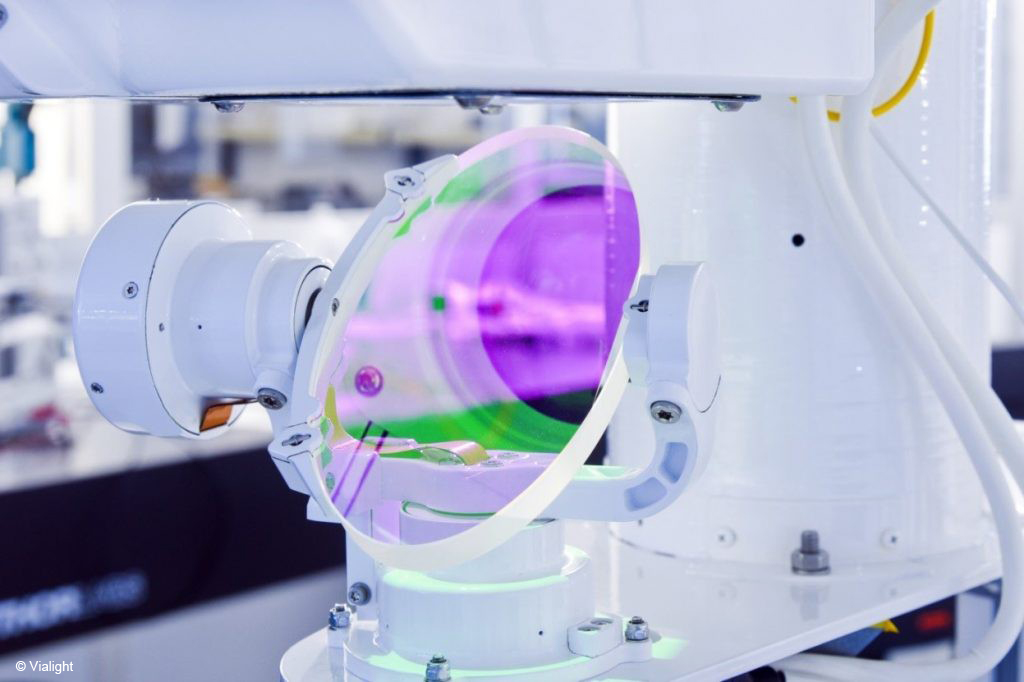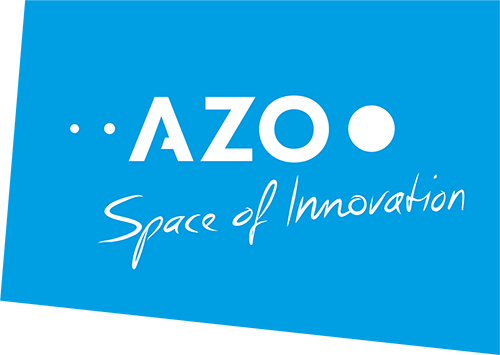The capabilities of our modern society depend on rapidly increasing amounts of data that are constantly being exchanged internationally between us humans and information processing infrastructure. The network between computers, machines and robots is becoming denser every day and communication links with high bit rates lay the foundation for this ever increasing data exchange.
Generally, data can be either transmitted in a wired or wireless manner. The majority of today’s flood of data is being transmitted with high data rates through fiber optic cables. These fiber optic links are predominantly used in densely populated areas as well as for long haul connections, such as intercontinental submarine cables. However, for many geographic locations, no connection to this network infrastructure exists, existing connections do not allow high transmission rates, or an upgrade or installation to connect to the network are not economically feasible. Wireless connections in the form of classical radio communication technologies are used in these locations today. Increasing demand for higher amounts of data put these radio communication technologies to the limits of their capabilities as they cannot provide the required transmission rates.
For this reason, researchers from DLR started two decades ago to develop the next generation of wireless communication technology and verify its feasibility experimentally – high rate data transmission through laser beams. Just like the introduction of the computer, the internet, or the smartphone, the realization of this technology is a milestone for the future development of our society. Hundreds of times more data can be transmitted wirelessly over thousands of kilometers with laser communication than with radio communication technology and that is just the beginning. Today, we are about to overcome another technical barrier by allowing the wireless transmission of huge, and exponentially growing, amounts of data on a global level.
Laser communication will provide many remote locations with high data rates whose connection would not be economically possible otherwise. Constellations based on stratospheric aircraft and balloons at 20km altitudes and satellites in low Earth orbit around 1000km in altitude will merge with geostationary satellites at 40,000km in altitude to a world-spanning high data rate network in the future. Leading North American technology companies have already identified the opportunity and are investing massively in this new communication infrastructure. Laser communication with its large data rates will be a major enabling technology for these constellations and provide secure connections that cannot be tapped or jammed.
ESA BIC Bavaria alumnus ViaLight Communications, located in Gilching on the outskirts of Munich, realised this opportunity early on and developed a groundbreaking portfolio of laser communication products with data rates of up to 10 Gbps (Gigabit per second). Today, the company is leading the commercial market and distributes the systems through its German entity ViaLight Communications GmbH and its recently founded US subsidiary ViaLight Space, Inc. in Huntsville, Alabama. ViaLight has succeeded in developing low weight terminals (<10kg) with a minimum of power consumption (<50 Watt) at competitive prices, marking a turning point to make constellations of flying platforms and satellites a commercial reality.
ViaLight is a spin-off of the German Aerospace Center (DLR) and was founded 2009. The three founders of ViaLight, Dr. Markus Knapek, Joachim Horwath, and Dr. Dirk Giggenbach, recently received the “Spin-off Award” of the Gesellschaft von Freunden des DLR e.V. (GvF, English: Society of Friends of the DLR) for their achievements. The chairman of the DLR, Prof. Dr. Pascale Ehrenfreund, presented the team with the award that honors the successful transfer of research results to commercial applications. The benefits of such ventures for the German economy become apparent when considering the newly created jobs, not to mention the added value the technology brings to the overall German economy. The spin-off was supported by the DLR Institute for Communication and Navigation, by the DLR Technology Marketing division, the DLR office in Washington, USA, as well as by ESA BIC Bavaria programme in which the DLR is involved as a technical partner. ESA BIC Bavaria is one of Europe’s most successful incubation programmes in promoting the commercial use of aerospace technologies and is managed by Anwendungszentrum GmbH Oberpfaffenhofen (AZO) since 2009.
Currently products from ViaLight include laser terminals for stratospheric networks and optical ground stations. Developments for a new generation of laser terminals capable interconnecting satellite constellations are conducted in parallel.
Dr. Wolfram Peschko, CFO (Chief Financial Officer) of ViaLight, highlights: “Our goal is the widespread connection of a large range of fixed or airborne platforms with our products to position ViaLight Communications as the world’s leading company for laser communication in the future.”
Dr. Markus Knapek, founder and CEO of ViaLight adds: “We are just at the beginning and still have a lot of potential for developments ahead of us. A 1,000-fold increase in data rate is already under test at a research level. The information age has begun and the resulting deluge of data will come. ViaLight Communications is a world leader for wireless laser communication plays a central role in these developments.”
Author and Contact:
Sonja Winner
ViaLight Communications GmbH
Friedrichshafener Str.1
82205 Gilching
Tel: +49 8105 77705-283
sonja.winner@vialight.de




